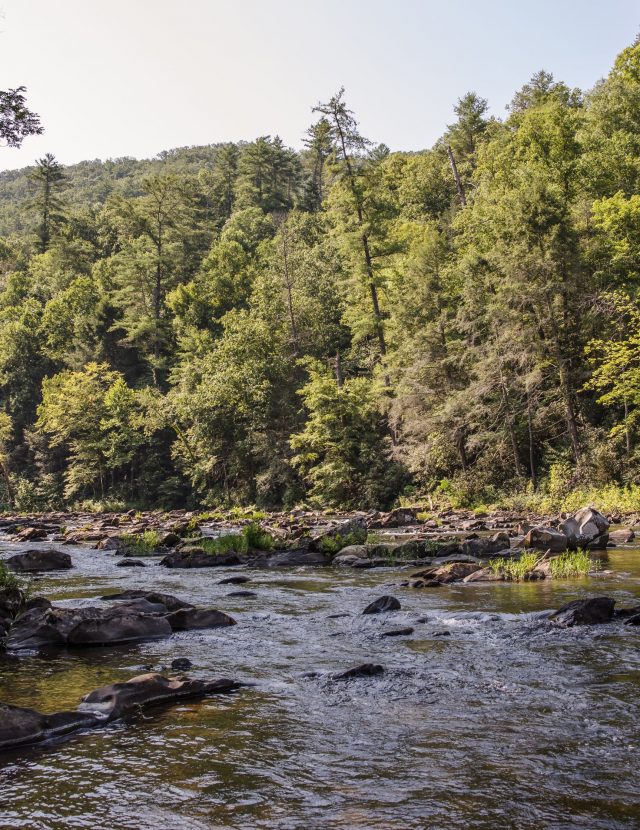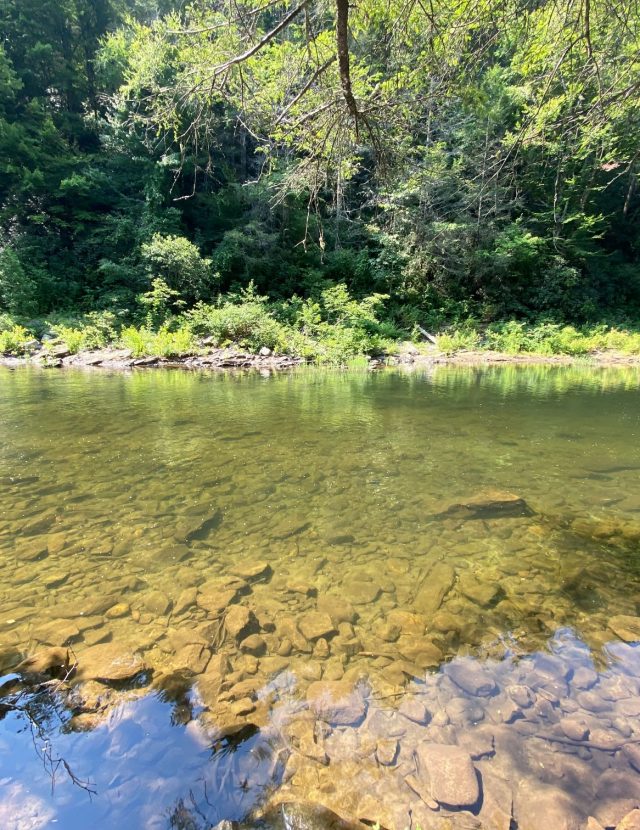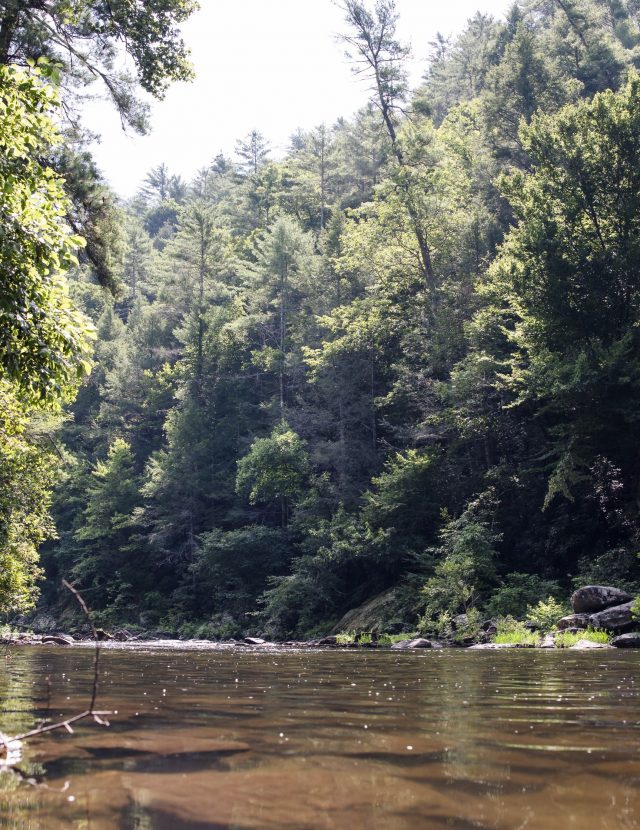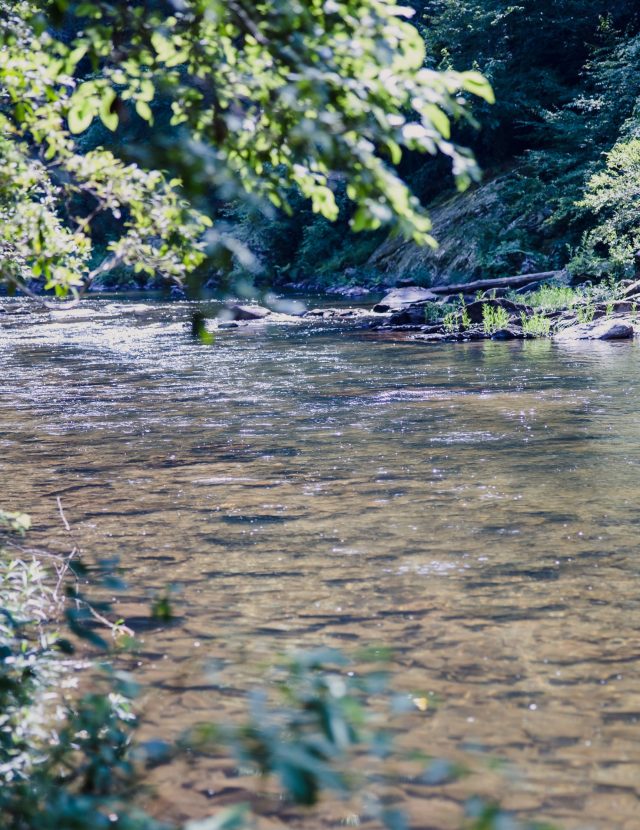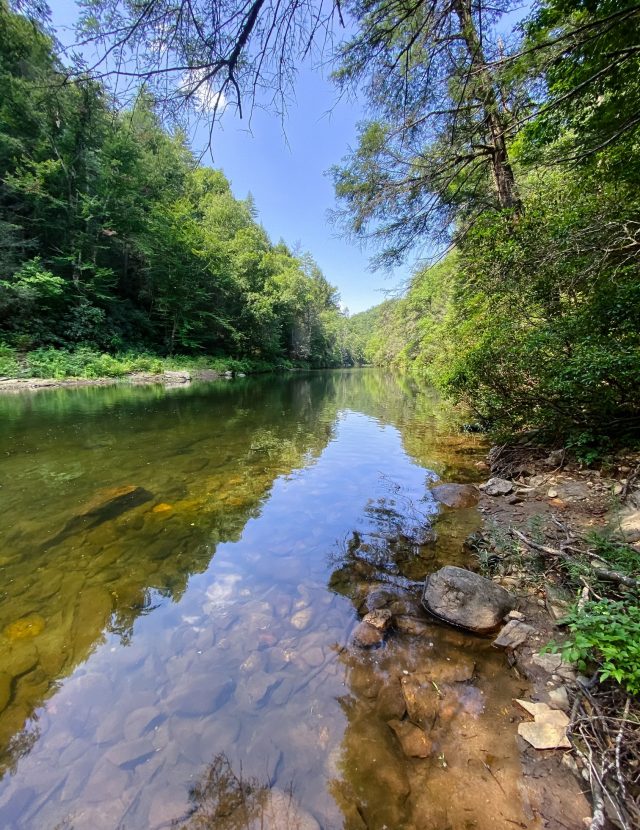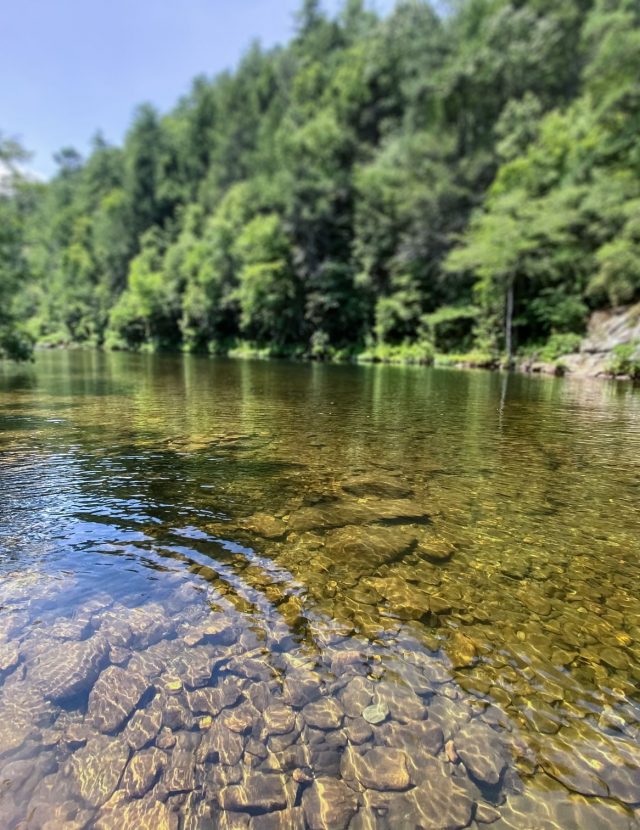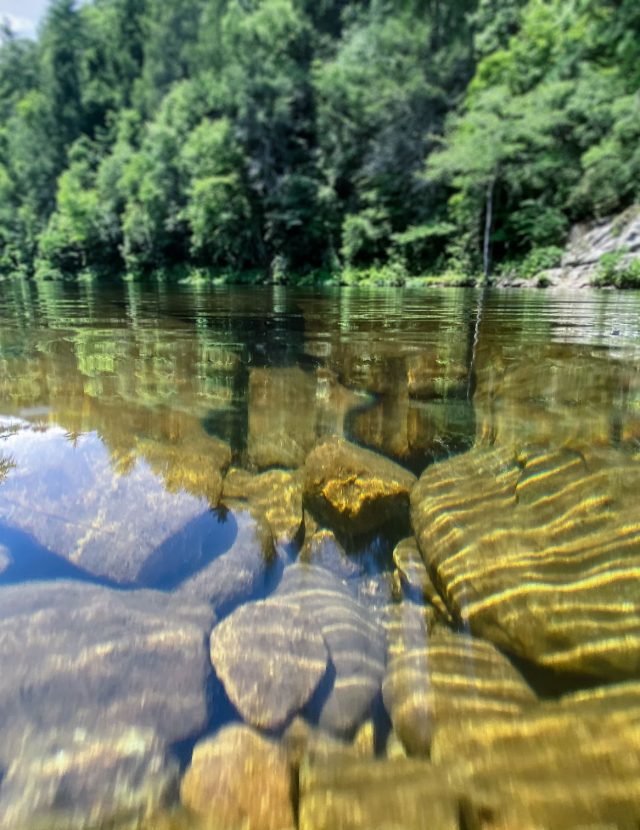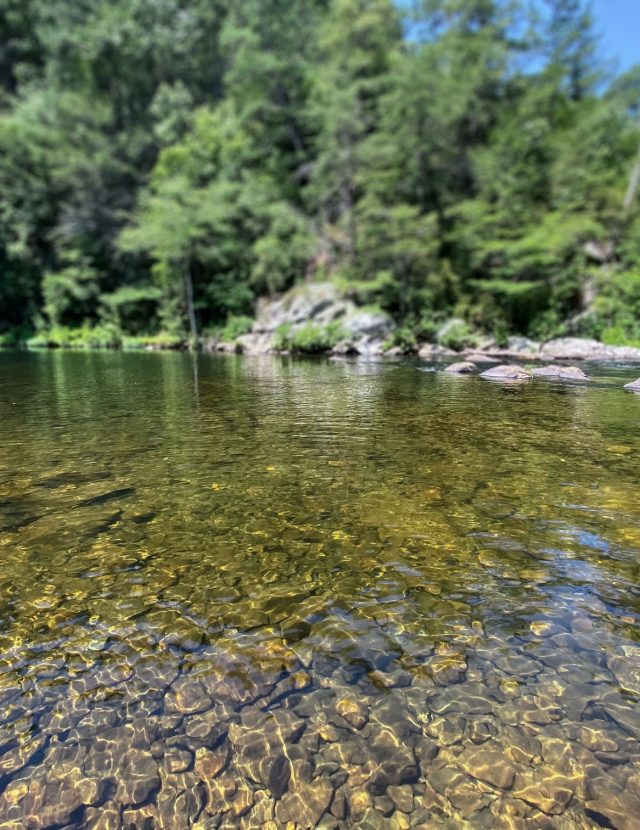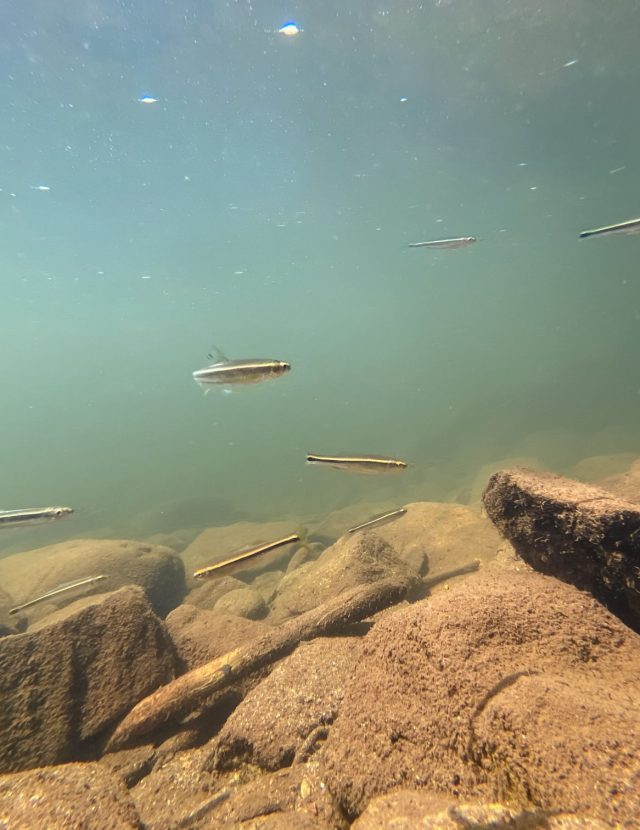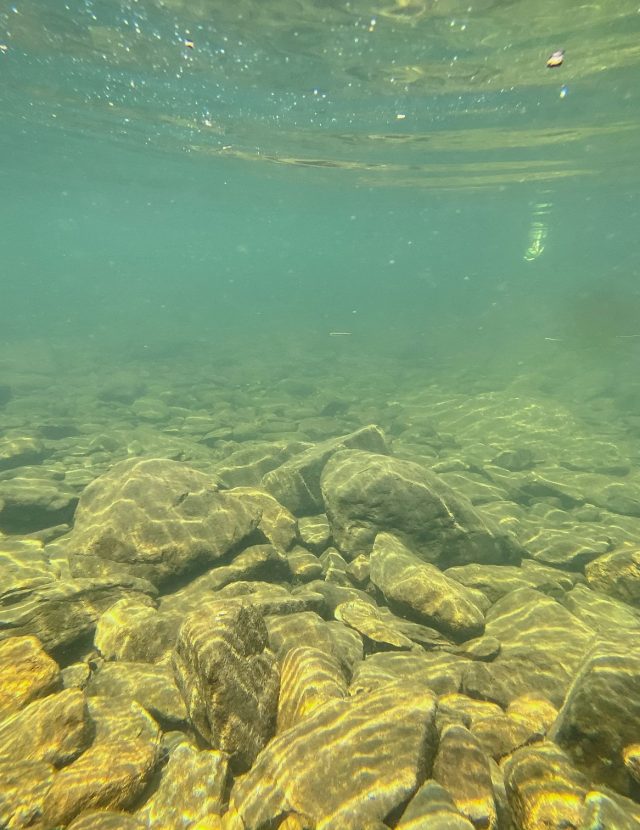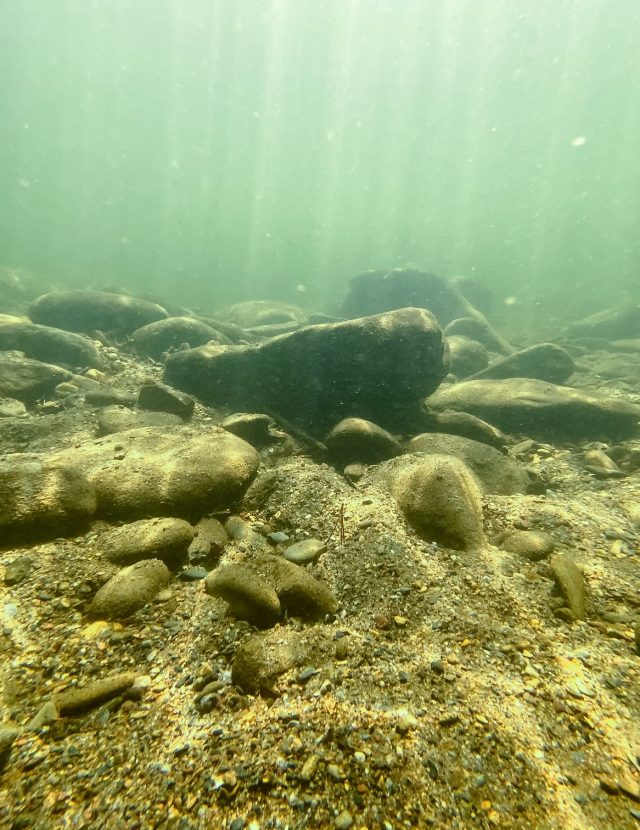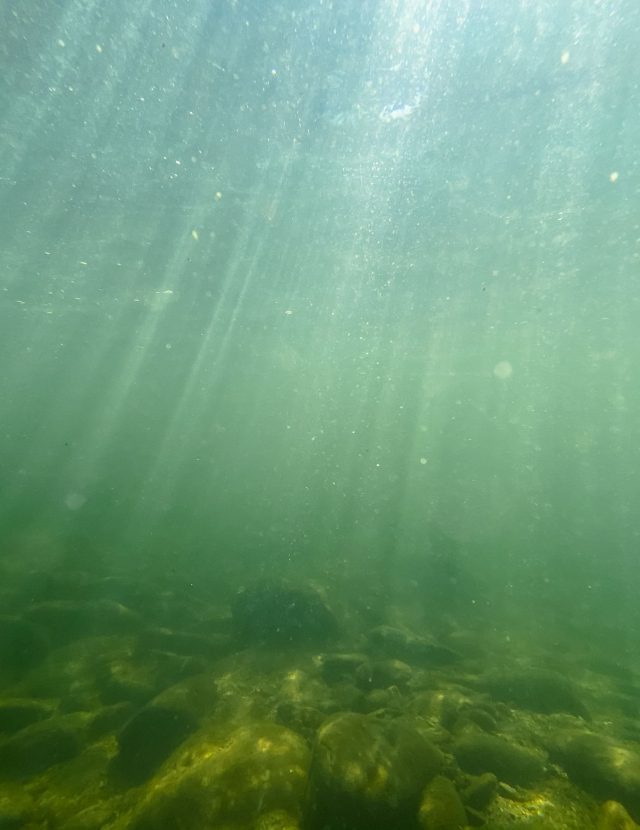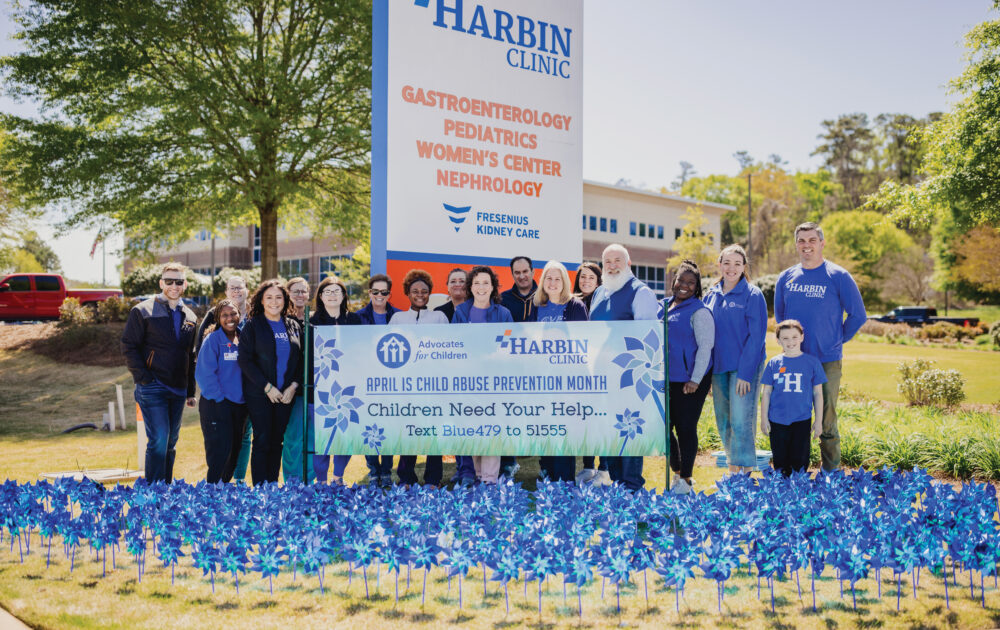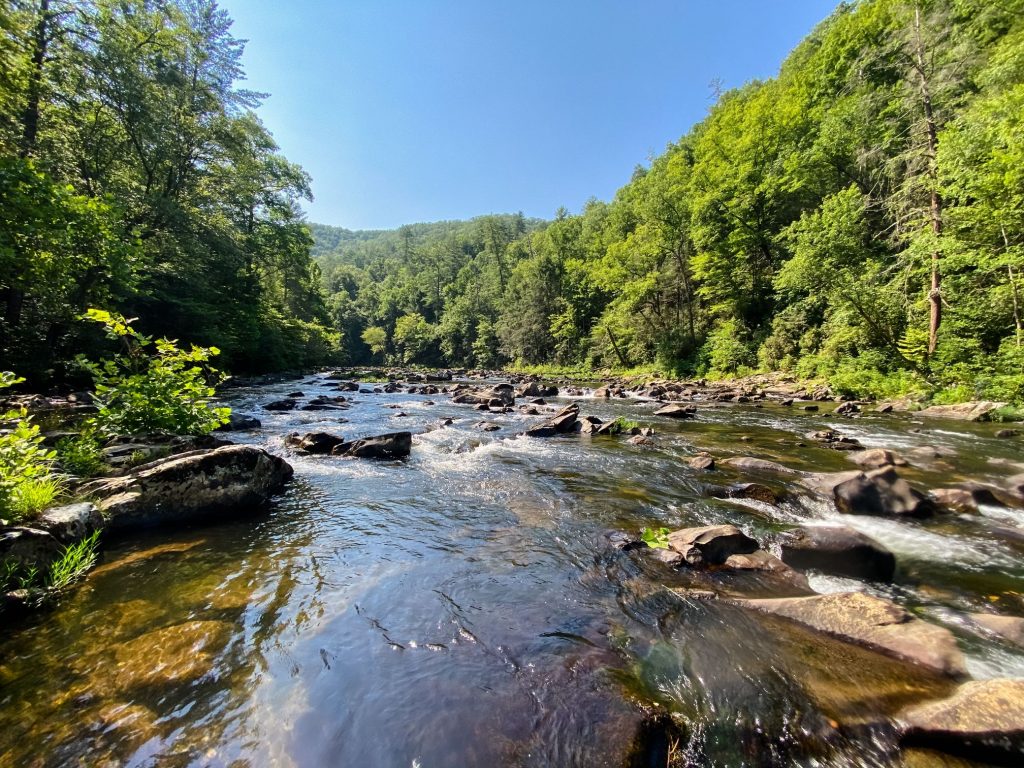
Photos Andy Calvert
Nestled in the lush Cohutta Mountains lies the most unexpected gem. Dense woodlands surround the Conasauga River flowing; ever pristine, from the Cherokee National Forest. For this outdoor adventure you will need some unexpected gear. A short walk from the Conasauga River trail head leads straight to the best snorkeling hole in northwest Georgia, where the abundance of tropically colored fish will leave you in awe of this unique outdoor treasure.
The V3 team arrives early to the gravel parking lot located an easy 90 minutes from Rome. The sun has not yet cleared the treetops, but the summer heat has already set its course for the mid-nineties. Armed with only masks, snorkels, and towels, the team sets out towards to the cool flowing current of the Conasauga.
The Conasauga River Trail offers a variety of activity options from hiking, biking, and horseback-riding. It is a 15-mile point-to-point trail with around 36 river crossings from Betty Gap to Bray Field and back. While the snorkeling spot is less than a mile downriver, the hike can be strenuous, making the cool water all the more refreshing upon arrival.
There is a bit of excitement as everyone gets into the water. This river is rather famous for its incredible biodiversity. In fact, there are 76 different species of fish in this one watershed. Comparatively speaking, this is more fish than the Columbia and Colorado Watersheds combined. The team jumps right in trying to identify the different fish swimming below. Several species of darters are the first seen.
Navigating the currents to explore the deeper holes, Ian Griffin soon sees a spotted bass. Carp collect in schools amongst the rocks. Their preening of the stones make a symphony of clicks and ticks heard over the rushing water. Everyone calls out a new discovery, and a sense of disbelief overtakes the group.
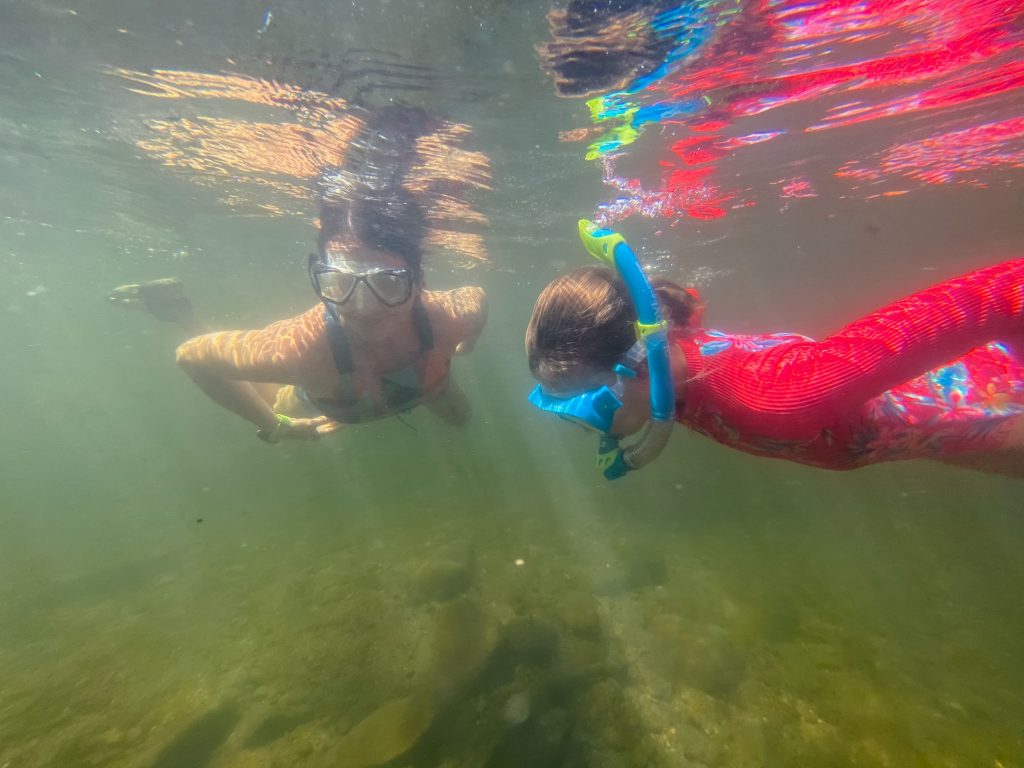
“I had no idea that something like this existed up here,” says Andy Calvert. “I never would have thought about snorkeling in north Georgia.” The Conasauga River is incredibly clean; downriver it feeds directly to the Oostanaula River. No one would dream of snorkeling the Oostanaula, with its waters murky with silt and sediment. Would it even be possible- with the strictest clean up efforts- to recreate the clear waters of today’s adventure back home in Rome?
To help answer this question, we spoke with Executive Director of Coosa River Basin Initiative, Jesse Demonbreun-Chapman. When asked about the significance of the Conasauga River, his voice reflects a childlike exuberance. Demonbreun-Chapman leads CRBI’s efforts in coordination with other groups that make up the Partnership for the Upper Coosa. This environmental group is an alliance of state and federal agencies and non-profits with restoration goals. “What makes the Conasauga River special is that it tells a pretty clears story of our impact on our rivers.
The upper Conasauga comes directly from the Cherokee National Forest in the Cohutta Mountains. The water is incredibly pristine and is home to more species than all of the rivers of Europe combined. That is really what makes the snorkeling so incredible. On any given day you can find dozens of different species of fish and mussels. Many of which are unique to the watershed and on National lists of endangered species. It is really unique,” he says.
The Conasauga River tells a story of the impact of land use on our waterways. In working with the Partnership for the Upper Coosa, there has been a collective increase in water monitoring. “This gives us the data pertaining to where the impacts begin. The river flows from the national forest into agricultural land use and from there winds through industrial areas. Each of these land uses makes its own impact on the water quality,” explains Demonbreun-Chapman. “From the samples, we can determine that agriculture adds a lot of sediment and many nutrients harmful for native species to the water. Further down river our water monitoring gives a clear and disturbing report of the impacts of industrialization and the chemical byproducts that make their way into the watershed.
You are probably aware of the dangers of PFAS class of chemicals as it has been in the news nationally and locally here in Rome. There are over 4000 different variants of PFAS and these chemicals are considered forever chemicals as they never breakdown and tend to stay in the water column. These chemicals are used to make daily products stick proof, stain resistant such Teflon, scotch guard, and fast food wrappers.” These chemicals have been found to cause developmental effects to fetuses and infants, kidney and testicular cancer, and liver malfunction among other things.
Far from an abstract concern, the quality of surrounding waterways has a direct impact on many towns in north Georgia. Last year Summerville, Ga. had to truck in drinking water as their city source was deemed hazardous; and Rome, Ga. changed their city water source from the Oostanaula River to the Etowah River out of concern for the water quality. Subsequently, local municipalities have raised class action lawsuits against many large industries in north Georgia citing misuse and water pollution.
“CRBI works hard to lobby to protect our waterways,” says Demonbreun-Chapman “The Partnership for the Upper Coosa works together to create restoration projects on the ground that will improve water quality. Federal and state grants are optimized by the PUC by avoiding duplicate projects from smaller local restorative efforts. Just last year the group worked together pulling resources to work with farmers; helping them reduce runoff and improve fencing to keep cattle out of the creeks, which are a large source of sediments, nutrients, and bacteria in the water.
Will the Etowah and Oostanaula Rivers ever be as clear and biodiverse as the Conasauga? “It’s unlikely,” says Demonbreun-Chapman. “It’s hard for downstream rivers to compete with the pristine nature of mountain streams surrounded by national forests. However, there has been a huge improvement in the Rivers of Rome in just the last fifty years, which is largely due to Federal regulations and local restoration efforts,” he explains.
As the day on the Conasauga River wraps up; members of the V3 team sit on its banks taking in the beautiful scene. The water is so clear you can see the fish as they nibble at your toes. This trip has served as a perfect repose for a hot summer day, and an inspiring adventure that promises to be repeated soon.

